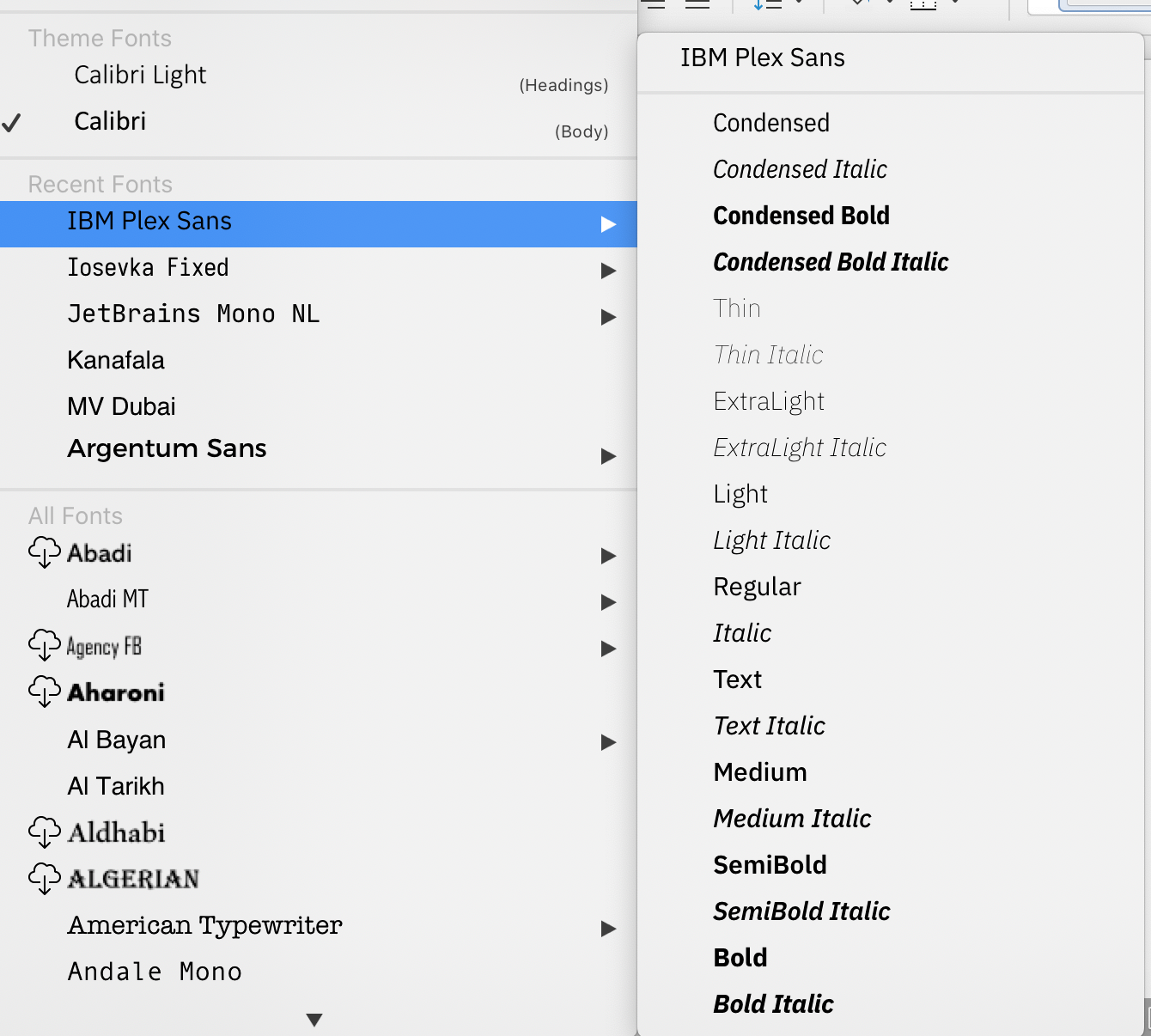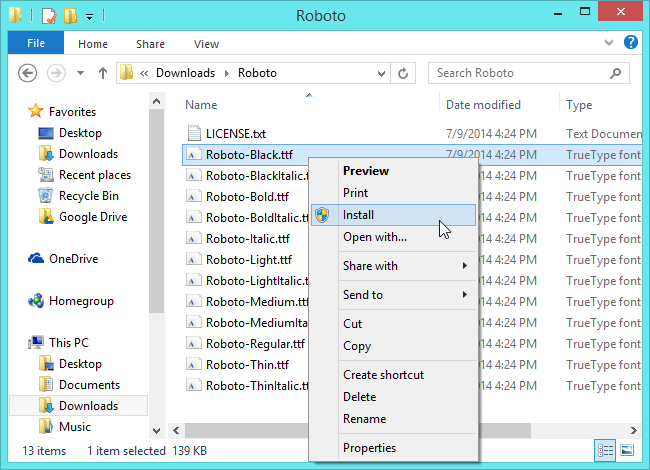

Anyway, thanks for posting back and letting us know. A variety of programs on your computer allow you to change a font. Just as easy to do it the other way which is why I don't use the above method. To cancel live previewing without applying any changes, press ESC.įor more information about formatting in Word, see Formatting. To apply the previewed formatting, click the selected font name, font size, or color. However, it's not as easy to preview the fonts and styles as you state:Ĭlick the Font box down-arrow, then move the pointer over the fonts.Ĭlick the Font Size box down arrow, then move the pointer over the font sizes.Ĭlick the Text Highlight Color button down-arrow, then move the pointer over the highlight or fill colors.Ĭlick the Font Color button down-arrow, then move the pointer over the font colors. As a matter of fact, it's checked off by default. Yes, I have that checked off in my Word 2011 preferences. I guess I misunderstood your original question. More information about this can be found in the SBL Hebrew manual.OK. It is advisable to disable this feature when typing with the SBL Hebrew fonts. This often has to do with the Auto-correction features in MS Word. When inputting characters in Microsoft Word, it displays the right character at first, but it changes when I type the next word. 12 pt, 24 pt, etc.) will ensure uniform spacing. single-spaced, double-spaced) to an exact spacing (e.g. How can I make them the same?Ĭhanging the line-spacing from a relative (e.g. When I type lines that contain only English and others that contain Hebrew, the line spacing is different. Make sure that the font selected in the font menu is in fact SBL Hebrew. When this happens, it will appear like this:
#FONTS FOR WORD ON MAC WINDOWS#
There is a particular issue in older versions Microsoft Word (2003 and older) on Windows XP where the font reverts back to Times New Roman, whose older versions do not contain the complex scripts that the SBL Hebrew font uses. When I type a holem, it is too far to the left of the word. Use the search bar to search "On-screen keyboard" and launch that program. For all other states, other keys (like Shift or Alt) must also be held down to produce the character.Ī second method is to use the on-screen keyboard. For a normal state you only need to push the key. Please pay particular attention to the state at the top of the page. You may notice that there are several maps in each manual. If you will be using the fonts to input Hebrew quite a bit, it is recommended that you print out these character maps.
#FONTS FOR WORD ON MAC DOWNLOAD#
A character map of the keyboards can be found in their respective manuals, available for download in the SBL Hebrew page. Please note that depending on the Hebrew keyboard you are using (SIL or Tiro), different keys will produce different letters. You can find this information one of two ways.

Where can I find a layout for the Hebrew keyboards? You can also use the On-screen keyboard (Windows)/Keyboard Viewer (OS X) to locate keys. (Please note that characters with Unicode values in red are combining characters and not all characters are available in the SBL BibLit font.)ĪltGr (=right Alt key for Windows, alt/option for OS X) The transliteration keyboard uses the following layout: Where can I find specific keys for the transliteration keyboard? Please refer to the installation instructions for the individual platform for help activating them.
#FONTS FOR WORD ON MAC MAC#
Both Windows and Mac operating systems ship with a Greek Polytonic keyboard suitable for biblical and classical Greek. Even though learning to switch to and use keyboard layouts for other languages takes a little bit of time to learn, the benefits of Unicode more than make up for this small initial investment of time and effort. This makes cross-platform text transfers and searches possible, because texts can be encoded with the characters in which they are written. So, an ayin both displays as an ayin and is encoded that way. Additionally, the computer understands the characters to be the ones that the screen displays. If one wants to use a different font for aesthetic (or other) reasons, one can change the font just like one would do with English. Likewise if the font is not installed, the computer simply defaults to its normal Unicode font. If a document is typed using one Unicode font, it will also be viewable using another Unicode font.

Unicode seeks to allow for transfer of encoded documents between platforms and independent of fonts. However, the computer understands these characters as "b" and "(." Thus, when the document is transferred to a computer that does not have that specific font installed, the computer displays those characters. So, with SPEzra for example, pushing "b" displays a bet, and "(" displays an ayin. With older, non-Unicode fonts, character glyphs were simply mapped over Roman characters.


 0 kommentar(er)
0 kommentar(er)
